#cycladic art
Text
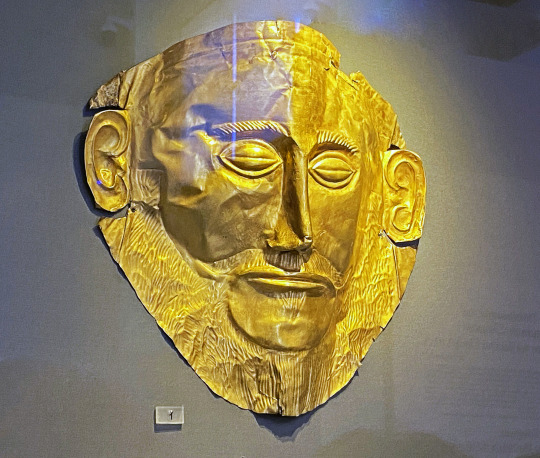
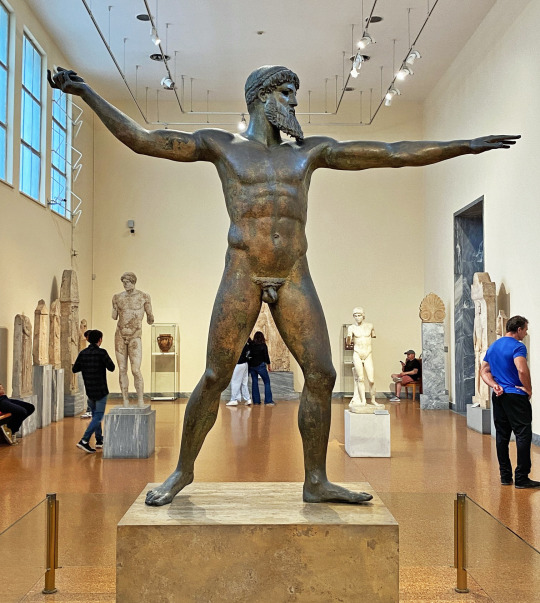
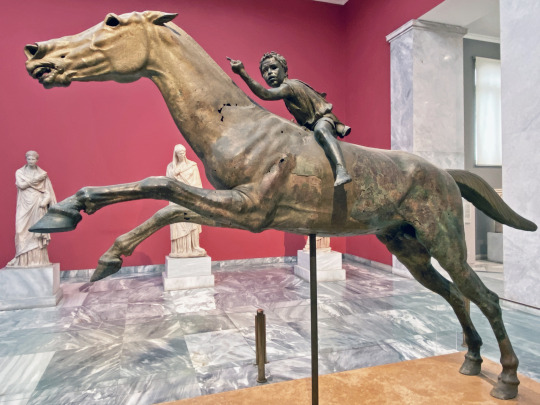


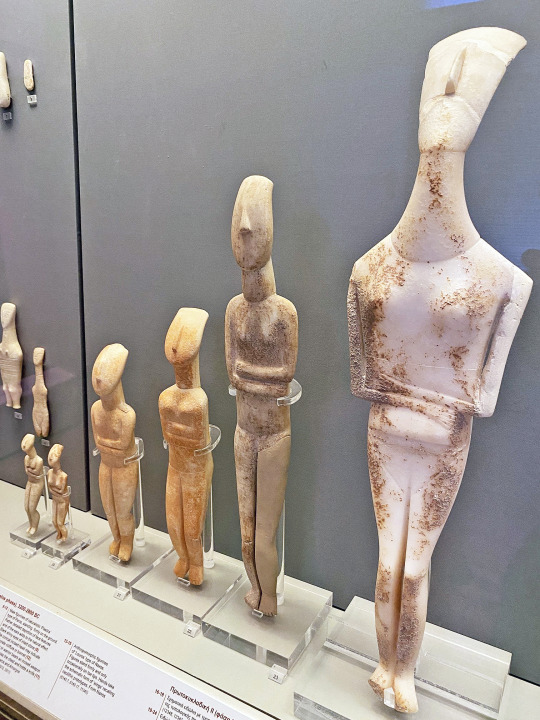
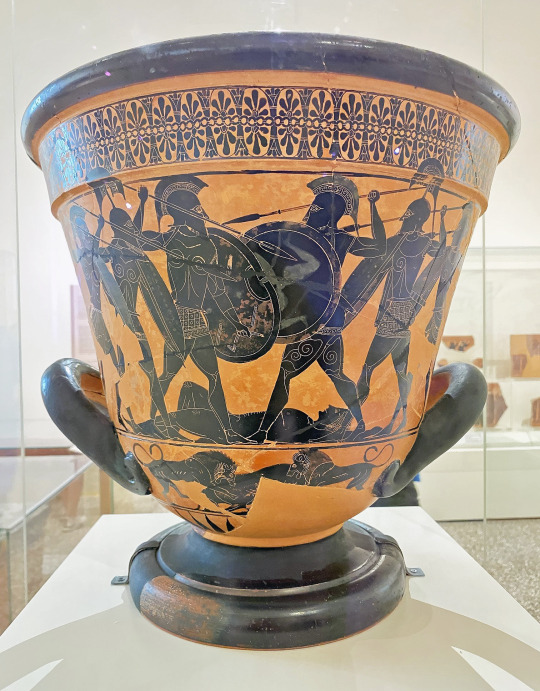

It took me a while but here are the last pics of my trip to Greece. The good news is i'll be there again in 2 months, so i can bore you with way too many pics again afterwards 😂
These are from the National Archeological museum in Athens, that was SO HUGE we spent way too many hours in there, but contains some incredibly famous pieces that everyone has seen or heard of, like the mask of Agamemnon or the Antikythera mechanism.
#museum#archaeological#greece#athens#agamemnon#mask#zeus#poseidon#antikythera mechanism#pottery#vessels#cycladic art#jockey#artemision
10 notes
·
View notes
Photo

A CYCLADIC MARBLE FEMALE TORSO
LATE SPEDOS VARIETY, EARLY CYCLADIC II, CIRCA 2500-2400 B.C.
4 7⁄8 in. (12.3 cm.) high.
#A CYCLADIC MARBLE FEMALE TORSO#LATE SPEDOS VARIETY EARLY CYCLADIC II CIRCA 2500-2400 B.C.#archeology#archeolgst#ancient artifacts#history#history news#ancient culture#ancient civilizations#cycladic culture#cycladic art
32 notes
·
View notes
Text


Two of my favorite pieces of ancient art at the AIC.
3 notes
·
View notes
Text
Έκθεση Αντιγράφων Κυκλαδικής Τέχνης στη Σύρο: Ξεκινούν τα δωρεάν εκπαιδευτικά προγράμματα
Exhibition of Cycladic Art Copies in Syros: Free educational programs begin
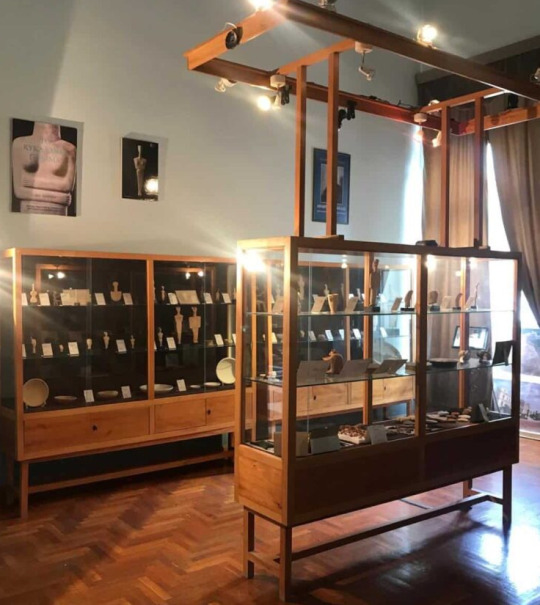
(yes now in Greece you can learn to make ancient Cycladic art, professionally, for free <3 Sometimes I love our country <3)
45 notes
·
View notes
Text
youtube
Στην Πρωτοκυκλαδική ΙΙ περίοδο παρατηρείται μία μικρή άρση της συμμετρίας στα ειδώλια, δίνοντάς τους μία μορφή πιο κοντά στο πραγματικό ανθρώπινο σώμα. Το δεξί σκέλος διαφέρει από το αριστερό, ενώ συνήθως στα γυναικεία ειδώλια παριστάνονται πιο έντονα οι μαστοί και η διογκωμένη κοιλιά.
Μου αρέσει ιδιαίτερα η συγκεκριμένη λεπτομέρεια των κυκλαδιτών, δεδομένου ότι η επίπεδη κοιλιά που φέρει το ανδρικό σώμα, δίχως να προηγείται η γνώση της ανατομίας, δεν καθηλώνεται αυστηρά και στο γυναικείο. Συνήθως η διογκωμένη κοιλιά, βέβαια, συνδέεται με κατάσταση εγκυμοσύνης στα γυναικεία ειδώλια ή σα σύμβολο γονιμότητας - ερμηνεία η οποία, ωστόσο, δεν εξηγεί τα ανδρικά ειδώλια ή την παντελή έλλειψη ειδωλίων στους περισσότερους τάφους. Η διογκωμένη κοιλιά, όμως, θα μπορούσε να είναι και μία απλή λεπτομέρεια από παρατήρηση.
#Youtube#cycladic#cycladic art#national archaeological museum#museum of cycladic art#μουσείο κυκλαδικής τέχνης
10 notes
·
View notes
Text
Prehistoric Figurine of a Harp Player, from the Cyclades (Greece), c. 2700-2300 BCE: this figurine was shaped from a block of solid marble and then slowly sanded into form using pumice and emery

The figurine depicts a musician with a frame harp, an instrument that originated in the Near East and then later spread to the peoples of the Aegean. A sound box forms the section along the base of the instrument, and a small protrusion can be seen near the top of the harp's frame; some experts have argued that this protrusion might represent an ornamental carving of a waterfowl's head, while others argue that it represents a musical extension that facilitates the projection of sound (a feature that often appears on the stringed instruments of the ancient Near East).
This piece measures 35.8cm (about 14 inches) tall.
Musical performances like this are rarely depicted in Cycladic artwork. Depictions of male characters are similarly rare, representing only 5% of the Cycladic sculptures that are known to exist. When male figures are depicted, however, they are frequently shown playing musical instruments, as seen here.

Figurine of a Harpist, c. 2800-2700 BCE: a similar example of a Cycladic sculpture that features a musician with a frame harp
The Museum of Cycladic Art provides a more detailed explanation of the process by which these figures were created:
As we can deduce from the few unfinished figurines that have been discovered so far, the first step in the process was to roughly shape the raw piece of marble into a figure by the impact of a mallet. Emery powder was then used to abrade the surface until it obtained the desired shape and size. Once the desired shape was achieved, the surface was smoothed carefully before the fine work of carving the details started. At the end, the figurine was polished to a high degree that is still amazing.
And according to The Met:
Many of these figures, especially those of the Spedos type, display a remarkable consistency in form and proportion that suggests they were planned with a compass. Scientific analysis has shown that the surface of the marble was painted with mineral-based pigments—azurite for blue and iron ores, or cinnabar for red.
The Cycladic Islands (also known as the Cyclades) are a group of about 30 separate islands in the Southwest Aegean, off the coast of mainland Greece. These islands contain a wealth of natural resources, including marble, emery, pumice, obsidian, and an assortment of precious metals. The prehistoric peoples of the Cyclades made use of these resources for many different purposes, but the marble figurines/sculptures that they crafted during the Bronze Age are perhaps their most famous creation.
The vast majority of these figurines are stylized depictions of the female form. The cultural significance of the sculptures remains unclear; they may have simply been created as decorative pieces/artwork, without any additional function, or they may have been used as fetishes, totems, religious idols, grave goods, or votive offerings.
Sources & More Info:
The Getty Museum: Figurine of a Harp Player
The Met: Cycladic Harp Player
The Met: Early Cycladic Art and Culture
The Museum of Cycladic Art: Techniques
#archaeology#history#artifact#ancient history#prehistoric art#art#sculpture#music#greece#cycladic#bronze age#anthropology#harp
1K notes
·
View notes
Text


Painted Reconstruction of the Cycladic Figurines of Ancient Greece, cast from original, 2800 to 2300BCE
Ashmolean Museum, Oxford
#cyclades#archaeology#figure#painted face#votive#offering#ancient cultures#ancient living#ancient craft#crafts#sculpture#marble#symbols#female form#body art
58 notes
·
View notes
Photo

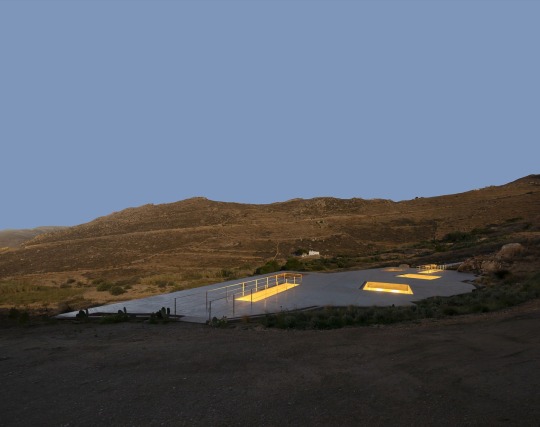
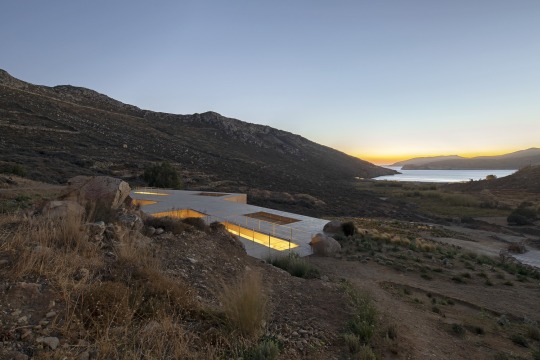


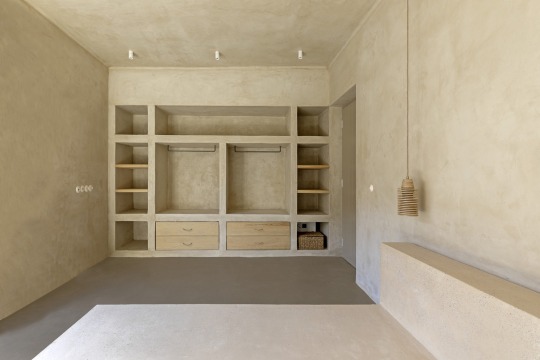

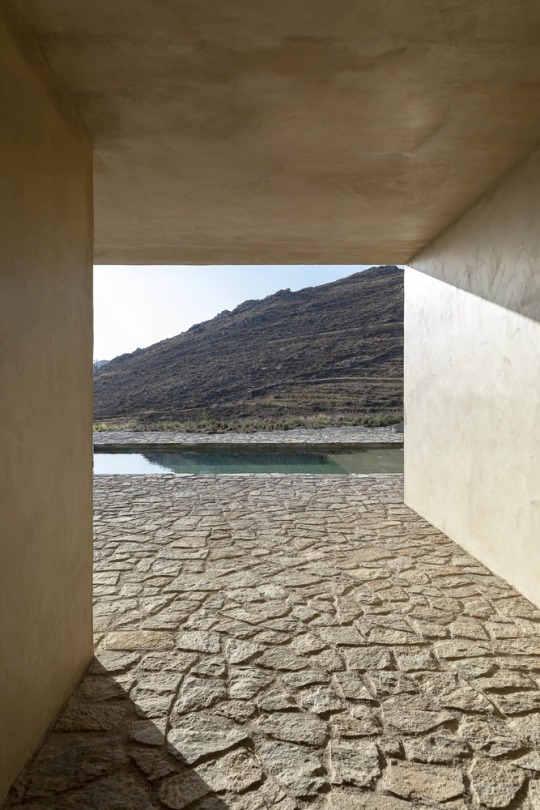
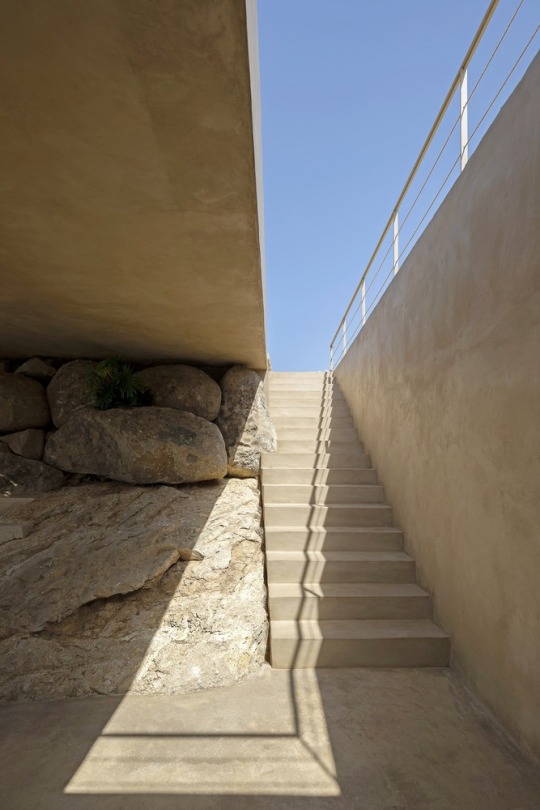

“Homa” Boutique Hotel, Vagia - Serifos, Cyclades Islands, Greece,
MOLD Architects
#art#design#architecture#boutique hotel#minimalism#greece#serifos#cyclades islands#homa vagia#vagia#mold architecture#travels#retreat#beach hotel#soil
308 notes
·
View notes
Text



Marlene Dumas: Cycladic Blues
91 notes
·
View notes
Photo






A CYCLADIC MARBLE HEAD
EARLY SPEDOS TYPE, EARLY CYCLADIC II, CIRCA 2600-2500 B.C.
5 3⁄8 in. (13.6 cm.) high.
Through comparison to complete folded arm female figures, the dimensions of this impressive head suggest the original length of this example would have been nearly 21 in. (55 cm.) long. The style of this Early Spedos head shares many characteristics of figures assigned to the Steiner Sculptor, including the defined triangular nose, the comparatively deep chin, the grooves at the join of the neck and the elegant backward arch of the forehead (compare no. 33 in P. Getz-Preziosi, Early Cycladic Art in North American Collections and pls. 69-70 in P. Getz-Gentle, Personal Styles in Early Cycladic Sculpture).
Although rarely preserved, most Cycladic sculpture of the Spedos type would have originally been richly painted in red and blue pigment. This figure is remarkable for its preservation of traces of original red pigment on its cheeks, in a pattern often referred to as a “tattoo” of dots.
#A CYCLADIC MARBLE HEAD#EARLY SPEDOS TYPE EARLY CYCLADIC II CIRCA 2600-2500 B.C.#archeology#archeolgst#ancient artifacts#history#history news#ancient history#ancient culture#ancient civilizations#cycladic culture#cycladic art
5 notes
·
View notes
Text

Reservé Sunset—Oia, Santorini, Greece 2017
#original#art photo#art photographers#photographers on tumblr#original photographers#dining#wine#sunset#thira#aegean sea#mediterranean#travel#cyclades
25 notes
·
View notes
Text

Head of a Cycladic statue with pigment remnants on the eye and cheek, Parian marble, found on Amorgos, c. Early Cycladic II (2800-2300 BCE)
currently in the collection of the National Archaeological Museum (Athens, Greece)
93 notes
·
View notes
Text
"sacred band of thebes" doesn't sound as cool as "Ιερολοχίτες"
#there's going to be an exhibition about the battle of chaeronea in the museum of cycladic art in athens starting this december btw#which will also have video material from ubisoft surprisingly enough
37 notes
·
View notes
Text

Marble female figure, C. 4500–4000 BCE
Cycladic
#final Neolithic#artifact#Cycladic#Neolithic#history#historical sculpture#historical art#sculpture#art
9 notes
·
View notes
Text

Brice Marden & Greek Antiquity : Divine Dialogues, The Museum of Cycladic Art, Athens, 2022



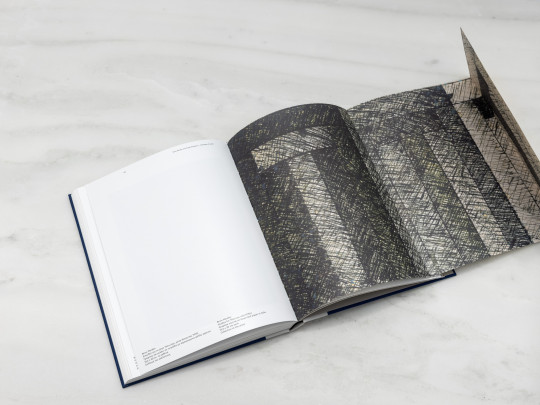


Curatorship: Dimitrios Antonitsis
Edition coordinator: Maria Basagianni
Preface: Kassandra Marinopoulou
Introduction: Aphrodite Gonou
Exhibition: May 20 – October 3, 2022
#graphic design#art#drawing#visual writing#mixed media#exhibition#catalogue#catalog#cover#brice marden#dimitrios antonitsis#maria basagianni#kassandra marinopoulou#aphrodite gonou#museum of cycladic art#2020s
21 notes
·
View notes
